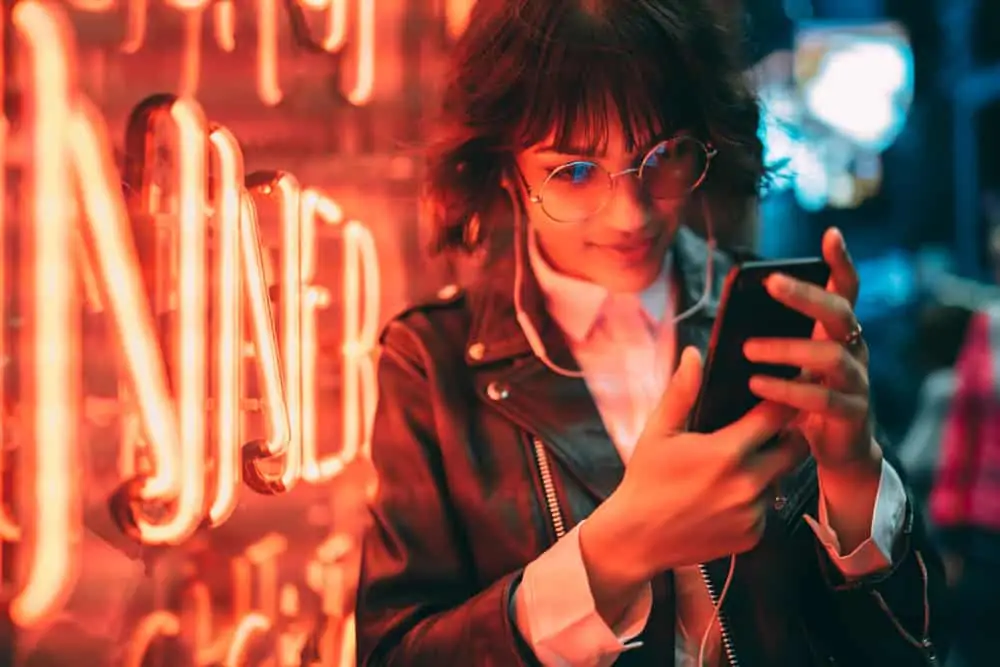Huawei P30 Lite: At First Glance
Recently, we cannot help but notice that Huawei has joined the likes of Motorola in creating a balance in the highly competitive smartphone market. This Chinese company has been able to simultaneously pull both budget-conscious and high-end smartphone lovers to their side.
From the Huawei P8 all the way to the most recent P50, Huawei creates flagship smartphones and their mid-range counterparts. For our focus today, there’s the P30 Lite which is the mid-range smartphone between the more expensive P30 and P30 Pro.
Having said that, we cannot expect a mid-ranger to be the same as its more expensive siblings. However, will the Huawei P30 lite still have a place in the minds of those searching for a decent mid-range smartphone?
Do read on to find out.
Huawei P30 Lite: Design, Dimensions and Weight
Even though this is a less expensive model compared to its other P30 siblings, the Huawei P30 Lite has the same captivating design. Like the others, the P30 Lite has a glass black.
However, instead of the same aluminum frame, you’ll find in the other models, this model has a plastic frame.
Regardless, the plastic frame doesn’t stop this phone from looking amazing. Because of its glass back, the Huawei P30 Lite is very slippery so you’ll have to use a phone case for a stronger grip.
Even though you have to use a case for safety, truth is, this case reduces the alluring gradient finish on the phone’s back. Speaking of which, the three different color variants brings out the beauty of the Huawei P30 Lite.
Actually, you can get this phone in Midnight Black, Peacock Blue, or Pearl White. Out of all three color variants, Peacock Blue seems to be the most prevalent which is because of its blue and purple combination.
All the same, this Huawei beauty is evident in every color variant. Still on its design, we can see Huawei’s attempt to make this phone almost bezel-less.
In fact, the Huawei P30 Lite has a 90% screen-to-body ratio. By screen to body ratio, I mean how much the display screen occupies the phone’s surface.
This means that the display screen is the dominant and most visible component that really takes up the phone’s surface. Without a doubt, a screen-to-body ratio of 90% is a really good figure on here.
Furthermore, surrounding that near-bezel-less surface is just a notch cut out for the selfie cam. On the lower end of the notch is a little forehead at the phone’s chin.
Still on the surface is a very subtle notification LED at the top just beside the selfie camera lens. This LED notification lets you know when something needs your attention on this phone.
As good as this Huawei smartphone looks, it’s important that it feels good too right? On that note, let’s talk about this phone’s weight and dimension.
The Huawei P30 Lite weighs 159 g with a dimension of 152.9 x 72.7 x 7.4 mm. Comparatively, the Google Pixel 3a is shorter in height but thicker than the P30 Lite.
To be exact, the Pixel 3a has a dimension of 151.6 x 70.1 x 8.2 mm. In addition to that, this smartphone weighs lesser than the P30 Lite.
Specifically, Google Pixel 3a weighs 147 g.
Moving away from weight and dimension, a single speaker and the USB Type-C port are what you’ll see at the bottom of this smartphone. A type C charging port is very much expected, after all, it has become the norm in recent smartphones.
That aside, having just one speaker is below expectations of a phone of this range. Perhaps Huawei didn’t want to eliminate the audio jack for another speaker.
Speaking of which, the audio jack which is a rarity these days is also at the bottom of the P30 Lite. On that note, if the single speaker of this phone doesn’t impress you, just plug in a pair of headphones.
Moving on, the power button and volume rocker are in the typical position on the right side of the Huawei P30 Lite. The SIM slot, on the other hand, isn’t by the side as usual, instead, you’ll see it at the top area of the phone.
Notably, this SIM tray is a hybrid one which means you cannot have all three cards in there. To provide more clarity, this tray can either accommodate two nano-SIM cards without a microSD card.
Alternatively, you can slot in one nano-SIM card and a microSD card.
At the end of the day, you’ll have to sacrifice one for the other. The exception to this could be if you won’t be needing a microSD card in this device.
When you get to the storage section of this review, you’ll determine whether you need a microSD card or not.
Moving on, on the flip side of the Huawei P30 Lite, there are the triple-lens cameras set, placed horizontally in a camera bump. Right below that is an LED flash while there’s the “Huawei” text logo at the far end of the phone’s back.
Notably, the Huawei P30 Lite does not have dust or water-resistant protection like the P30 and P30 Pro. Such an omission shouldn’t be disappointing after all, we cannot expect that the P30 Lite will include the same features as its more expensive siblings.
To wrap up this section, I will rate the Huawei P30 Lite’s design features a nine out of ten in this review. My reason for providing such a rating is because of the sleek, desirable, and very modern design features of this smartphone.
Huawei P30 Lite: Display Features
As regards display, the Huawei P30 Lite has some interesting display technology in it. To break it down, the display features include a Full HD+ (2312 x 1080) resolution.
There’s also its display size of 6.15 inches and a TFT LCD display panel. For starters, this TFT LCD display panel is an interesting aspect of this display.
For those hearing it for the first time, TFT stands for “thin film transistor”. On some occasions, it may be referred to with its collective name – LTPS-TFT which stands for “low-temperature polycrystalline silicon in thin-film transistors”
Jargons aside, both LTPS-TFT and TFT mean the same thing. However, LTPS is a variation of TFT that is different from the generic TFT displays.
If you are used to just hearing about IPS LCDs, TFT is actually a more advanced form of IPS LCDs. Now, you may be asking, what’s the impact of all these?
Well, LTPS provides higher resolutions and less power consumption as compared to traditional TFT screens. This also means that LTPS is a better choice over typical IPS LCD displays.
Notably, Huawei included the more sophisticated OLED display panel in the P30 and P30 Pro. Apparently, the P30 Lite’s display is nothing close to the brilliant display of its more expensive variants.
Irrespective of that, Huawei retained the display resolution found the P30 and P30 Pro in the P30 Lite. To be exact, the P30 Lite also has the same Full HD+ resolution – the same display resolution available in P30 and P30 Pro.
The combination of both display resolution and panel technology of the P30 Lite delivers display clarity and good color reproduction.
Furthermore, viewing angles and display brightness on this device is reliable. As regards brightness, this smartphone has maximum screen brightness of 501 nits.
With that 501 nits, you can be sure to enjoy clarity on this screen even when outdoors. Moving away from that, the 6.15-inch size of this screen is for lovers of big screens.
Whether it’s gaming, reading, or watching videos, this screen will serve you well.
Thankfully, it’s good to see that Huawei didn’t make too many compromises in the P30 Lite’s display. Considering that, the display features of the Huawei P30 Lite deserves a rating of eight in this section of the review
Huawei P30 Lite: Camera Features
Despite being the less expensive variant of the P30 series, Huawei packed the P30 Lite with some good camera lenses. There’s a single selfie camera and rear-facing camera which comprises three camera lenses.
In detail, the rear camera includes a 48 MP main camera with ƒ/1.8 aperture and an 8 MP ultra-wide lens with ƒ/2.4 aperture. The third lens on the rear is a 2 MP depth sensor with f/2.4 aperture while the rear-facing camera is 24 MP with ƒ/2.0 aperture.
As you may have rightly guessed for a Huawei phone, this main camera produces great pictures in good light. In addition to that, details are sharp with good saturation and colors are crystal clear.
For those who live for the nightlife, this smartphone has a night mode feature. This night mode feature does a better job than the main cam when it comes to night shots.
Details also come out just fine and better than what you’ll get by just using the main cam for night shots. Even though this night mode takes some seconds longer to process, when it does, it’s worth the wait.
When it comes to taking those selfies, the front-facing camera gives the subject a very natural look with fine details and good color reproduction. Even though this front-facing camera does not have an LED flash, the screen flash still does the job well.
For portraits, this front-facing camera detects edges without hitches, and image separation is also impressive.
In the aspect of shooting videos, you can record videos in 1080p. Despite the fact that this is a mid-range smartphone, Huawei should have made it possible to record videos in 4K instead of just 1080p.
Furthermore, on its video recording features, this camera has Electronic Image Stabilization (EIS). This EIS maintains a constant frame which prevents the video from being shaky when recording.
For a fact, we cannot deny that this smartphone’s camera really does well for a supposed mid-ranger except for its inability to record videos in 4K. On that note, the Huawei P30 Lite’s camera features deserve an eight in this section of the review.
Huawei P30 Lite: Battery Life and Talk Time
In the battery department, Huawei powers the P30 Lite with a ‘very’ low-end battery size of 3340 mAh non-removable battery. We understand that this should be the less expensive model of the P30 series but a battery lesser than 4000 mAh on this phone isn’t just right.
Even the more expensive P30 Pro just has a 4200 mAh battery. With the unimpressive battery size of the P30 Lite, you’re probably wondering what battery life is like.
Well, the Huawei P30 Lite can last a day of moderate use. To be precise, you can get about 13 hours of continuous web browsing.
By comparison, the Redmi Note 7 with its 4000 mAh battery goes as far as 17 hours on continuous web browsing. Fortunately, the Huawei P30 Lite does better than the Google Pixel 3a.
More precisely, the Google Pixel 3a with its 3000 mAh battery lasts 10 hours on continuous web browsing. Apparently, despite our displeasure with the battery size of P30 Lite, it does better than the Pixel 3a.
Now let’s talk about the charging features of the P30 Lite.
After a full day’s use without the charger, charging this phone from 0-100% will take 1 hour 44 minutes. This is actually fast and that’s because of the Quick charge fast charging feature in the P30 Lite.
As impressive as it sounds, Oppo smartphones do a better job at fast charging a phone in an hour or less. Nonetheless, Huawei made an effort with the fast charging feature of this P30 Lite.
In brief, there’s no denying that Huawei made a huge compromise on the battery of the P30 Lite. One good thing though is its impressive fast charging feature.
Considering all those reasons, the battery features of the Huawei P30 Lite deserve an eight in this section of the review.
Huawei P30 Lite: Storage Options and Performance
Those in need of large storage will definitely love the Huawei P30 Lite. This smartphone comes with three storage options depending on the model you purchase.
There’s the 64 GB, 128 GB, and 256 GB onboard storage. Notably, the price of the Huawei P30 Lite varies depending on the storage you’re going for.
For example, the 128 GB will be more expensive than the 64GB model. All the same, the price difference isn’t a lot – besides, you get the opportunity to choose just the right storage you need.
Furthermore, storage options don’t end there on this smartphone. Fortunately, you can expand this phone’s storage to a maximum of 256 GB with the use of a microSD card.
Remember the hybrid SIM slot I earlier mentioned in the design section?
Well, from the look of things, you may not need the microSD card if you purchase a variant of this phone with large storage.
Although, it’s important to note that a microSD card does not come with the phone. This means you’ll have to purchase it separately.
In a nutshell, Huawei has provided a good number of storage options in the P30 Lite. For that reason, the storage feature of the Huawei P30 Lite is worth a nine in this review.
Huawei P30 Lite: Security Features and Sensors
There’s no way you can talk about a smartphone without its sensors. Sensors are important because they enhance the usability of a smartphone – which makes it a “smart” phone in the first place.
Well, the sensors found in the Huawei P30 Lite include the ambient light, compass, fingerprint, gravity, gyroscope, and proximity sensors. To provide in-depth information, I will be explaining the function of each.
Let’s start with the ambient light and proximity sensors which are the most common even in low-end smartphones. The ambient light sensor does the job of automatically reducing screen brightness when using the phone in a well-lit environment.
Similar to that, the proximity sensor turns off the screen light of a phone when it’s close to your ears. This mostly happens when you’re on a call.
Because of their screen light regulation features, both the ambient light and proximity sensors are considered battery optimizers.
Another great pair of sensors are the gravity (which is also known as an accelerometer) and the gyroscope sensors. These sensors measure velocity and motion when you tilt your phone when gaming or activating auto rotation.
Next up is the compass sensor. By its name, you can guess its function.
Well, this sensor uses its information of the four cardinal points (east, west, north, and south) and communicates to the phone in which direction to go. Notably, the compass sensor cannot exactly work on its own without a compass app such as Compass 360 Pro.
In the aspect of security, you don’t have to secure the Huawei P30 lite using the PIN, pattern, or password method. Instead, this smartphone comes with fingerprint and face unlock sensors.
The fingerprint sensor at the back is fast and would not waste your time before detecting your fingerprint. Another feature is the face unlock that unlocks the device after you must have registered your face using the phone’s selfie camera.
Undoubtedly, this device has all the necessary sensors that make it an enjoyable smartphone. With that in mind, I will rate the P30 Lite sensor features a nine in this section of this review.
Frequently Asked Questions
On moderate use, this battery lasts a day.
No. The Huawei P30 Lite is not a 5G smartphone.
No. This smartphone does not support wireless charging. You’ll have to charge it with the regular use of a USB charger.
Yes. With the NFC (near-field communication) feature in the P30 Lite, contactless payments are possible. In simple terms, NFC makes it possible for your phone to communicate with other devices within a distance of 4cm.
It is with this NFC feature that contactless payments are possible.
The camera of the Huawei P30 Lite is pretty good and produces great pictures.
Conclusion
The Huawei P30 Lite is a mid-range smartphone that ticks almost all the boxes except affordability. It has a design that will make you not want to use a case and a headphone jack.
With this phone, you also get impressive cameras.
Even though it’s not as expensive as its other siblings in the range, this smartphone isn’t exactly cheap. Nonetheless, it appears that Huawei didn’t want to produce a mediocre smartphone.
If you’re willing to spend as much as $500 for a smartphone, the Huawei P30 Lite could be third on your list. Two other phones to consider are Google Pixel 3a, and Redmi Note 7.
I hope you found this Huawei P30 Lite Review helpful. You may share your thoughts with the “Leave a Comment” form found at the end of this page.
Alternatively, simply respond to the “Was this page helpful” question below and provide us with your feedback.
For more Smartphone reviews, visit our Smartphone Reviews page. You may also find our Smartphone Specs page very helpful.



